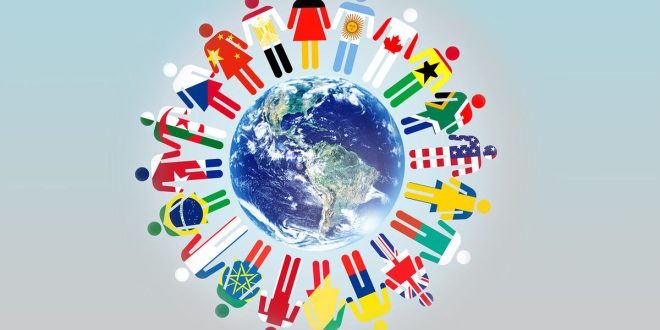Introduction:
Culture is the backbone of society, embodying the shared beliefs, values, customs, and practices that define different communities around the globe. The cultural world encompasses a rich tapestry of traditions, languages, art forms, and social norms that shape our identities and influence our interactions. This article delves into the various aspects of Өйёу its importance, and the ways in which it manifests in our lives.
What is Culture?
Culture can be understood as the collective programming of the mind that distinguishes the members of one group or category of people from another. It includes everything from language and religion to cuisine and art, reflecting the history and experiences of a community.
Key Elements of Culture
Several elements come together to form the intricate framework of culture:
Language: Language is one of the most vital aspects of culture, serving as a primary means of communication. It carries nuances and expressions that reflect the values and traditions of a community. From idioms to dialects, language plays a significant role in shaping cultural identity.
Religion and Beliefs: Religious beliefs often dictate societal values and moral codes. Different religions offer varying perspectives on life, ethics, and the universe, contributing to the diverse cultural landscapes around the world.
Arts and Literature: Artistic expression, whether through visual arts, music, dance, or literature, serves as a reflection of cultural identity. Each art form carries its own history and significance, allowing individuals to express their thoughts, emotions, and experiences.
Customs and Traditions: Customs are the habitual practices of a community, often passed down through generations. These include rituals, celebrations, and everyday behaviors that define a group’s way of life.
The Importance of Culture
Culture plays a crucial role in shaping human experiences and fostering connections among people. Understanding the significance of culture can help us appreciate its influence on our lives.
Identity and Belonging
Culture provides individuals with a sense of identity and belonging. It creates a framework through which people understand themselves and their place in the world. This shared identity fosters connections among community members, promoting social cohesion.
Preservation of Heritage
Cultural practices and traditions serve as a way to preserve history and heritage. They keep alive the stories and experiences of past generations, allowing current and future generations to learn from and appreciate their roots.
ncouraging Diversity and Inclusion
The cultural world is incredibly diverse, encompassing various perspectives and experiences. Embracing this diversity promotes inclusion, allowing different cultures to coexist and enrich one another. This exchange of ideas can lead to greater understanding and collaboration across communities.
Expressions of Culture in Everyday Life
Culture manifests itself in numerous ways in our daily lives. From the food we eat to the festivals we celebrate, cultural expressions are woven into the fabric of our existence.
Culinary Traditions
Food is a central aspect of culture, often reflecting a community’s history, geography, and values. Culinary traditions are unique to each culture, showcasing local ingredients and cooking methods.
Regional Dishes: Every culture has signature dishes that tell a story about its heritage. For example, Italian cuisine features pasta, while Indian cuisine is known for its use of spices and flavors.
Festivals and Feasts: Many cultures celebrate their heritage through food during festivals and special occasions. These gatherings often include traditional dishes that hold symbolic meaning.
Arts and Performances
The arts serve as a powerful means of cultural expression, allowing individuals to communicate complex ideas and emotions.
Visual Arts: Painting, sculpture, and crafts are all ways in which cultures express their identity. Traditional art forms often reflect historical narratives and societal values.
Performing Arts: Dance, theater, and music play essential roles in cultural expression. These forms of art often convey stories, rituals, and social commentary, providing insight into a community’s beliefs and experiences.
Festivals and Celebrations
Cultural festivals celebrate community heritage and foster unity among members. These events often feature traditional music, dance, food, and rituals.
Examples of Festivals:
Diwali: The Hindu festival of lights symbolizes the victory of light over darkness and good over evil.
Carnival: Celebrated in many countries, this festive season features parades, music, and vibrant costumes, highlighting cultural diversity.
Challenges Facing Cultural Preservation
While culture is a living, evolving entity, it faces numerous challenges in the modern world.
Globalization
Globalization has led to increased interaction among cultures, resulting in the exchange of ideas and practices. While this can foster understanding, it can also threaten local cultures. The dominance of popular culture can overshadow traditional practices, leading to a loss of cultural identity.
Technology and Media
The rise of digital media has transformed how cultures are expressed and consumed. While technology offers new platforms for cultural exchange, it can also dilute traditional forms of expression.
Migration and Displacement
Conflict and economic factors often lead to migration, disrupting cultural continuity. Displaced communities may struggle to maintain their cultural identity in new environments, facing the challenge of integrating into different cultural contexts.
Conclusion
The cultural world is a vibrant and intricate tapestry that shapes our identities and influences our interactions. Understanding and appreciating the diversity of cultures fosters connections and promotes social harmony. As we navigate the complexities of modern society, it is essential to preserve and celebrate our cultural heritage while embracing new ideas and practices. In doing so, we enrich our lives and contribute to a more inclusive and harmonious world.
 Crypto trade Online Unlock the Future of Finance Today.
Crypto trade Online Unlock the Future of Finance Today.




